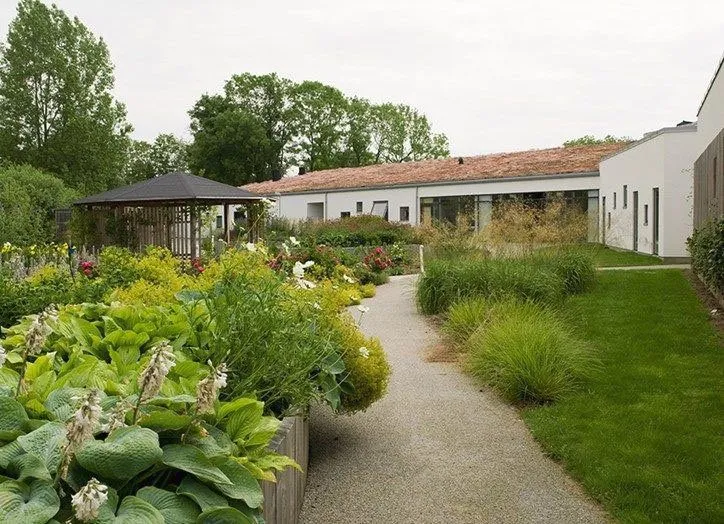-
Cart
No items added to cart
Subtotal {{ currencyFormat( getSubtotal() ) }}Continue -
Login/Register
No items added to cart
By Lars Wiinblad
Ten years of experience in Danish hospices show that the NADA protocol helps with stress, anxiety, pain,and that it also reduces the need for medication in palliative care. Also NADA can bypass much of the verbal denial and resistance that might otherwise limit the valuable time that patients and their relatives have together. It allows the verbal interaction to be quite flexible so that a patient who does not feel like talking can be accommodated easily and naturally.
Twenty years ago, the NADA protocol in Denmark was used mainly in drug treatment programs and psychiatric units, but,during the last 10 years,this has changed. The NADA protocol is now used in a variety of new settings – NADA in palliative care is such a program.
Several Danish hospices use NADA as a complementary method, and each year more hospices and palliative teams ask for training because they have heard from colleagues about what NADA can provide in their special field.

Hospice Sydfyn was built in 2012 with room for 12 patients. Most of them are residents, but some patients come for respite care. When a patient arrives at Hospice Sydfyn, NADA is a part of the introduction to the facility. A flyer can be found as soon as you enter; NADA is described on a TV screen in the hall; and further information can be found in the booklet describing the services that are offered. The NADA protocol is a service to patients as well as family members. Anytime, anywhere. There are no rules, but relatives are often encouraged to receive NADA in a group setting with the patient. Children are offered magnetic beads.
The management of Hospice Sydfyn supported NADA as a complementary method right from the start. Plans for implementation were part of the NADA trainings since staff wanted to be able to help the patients whenever needed. Thirty staff members have been trained as acudetox specialists, and the service is offered on a daily basis. Most nurses have been trained, as well as one of the secretaries. Patients and their families can receive the NADA protocol any time during the day or night. Staff, including not only nurses, doctors,and healthcare personnel but also priests, volunteers, kitchen personnel, technicians, and office assistants, among others, are getting NADA for stress relief. This is not offered continuously, as it is with the patients,but when appropriate.
Pia Aaes is a nurse at Hospice Sydfyn, and she is also a cofounder of a local community setting where the NADA protocol is offered twice a week to all citizens. She said that NADA is most often used to promote better sleep and to reduce anxiety and stress. Sometimes it is effective with delirium as a complementary method to medication. In general, when receiving the NADA protocol, the patients use less medication,especially tranquilizers and morphine, and this helps them to be focused and stay more awake.
She added, “We can reduce anxiety and restlessness without any side effects from medication. Patients often ask for NADA instead of tranquilizers. Most of our patients ask for NADA again – often on daily basis – when they have tried it once.â€
But acupuncture does not make sense to everyone. Some relatives are too stressed and feel they need much information and care before they might dare to receive NADA. But, in most cases, the NADA protocol is accepted and makes a big difference. Pia Aaes explains that “family members benefit from the NADA protocol because it helps them to relax, calm their minds, and assists them to be better able to cope with their sorrow. Some use the needles to provide a much-needed break from thinking and worrying.â€
The NADA protocol is a unique and helpful tool in trauma and stressful situations where a nonverbal method is needed. It helps patients and relatives in the process of coping and find a little peace in a chaotic situation. At Hospice Sydfyn, it is obvious to the staff that the NADA protocol helps the patient and their relatives to communicate in a more gentle and caring way. Many families find it easier to be together and talk about emotional and complicated topics after a NADA session. Aaes added that: “Being able to help patients and relatives coping with sorrow and letting go in a quick and simple way is a privilege to me as a nurse.â€
NADA is a foundation. A foundation is the basic part of having something done successfully –you can build many different types of houses on it.
~Michael Smith
We are the National Acupuncture Detoxification Association, an organization that trains people in the NADA protocol to treat trauma, substance misuse, abuse, and mental health conditions.
Copyright © 2025 National Acupuncture Detoxification Association